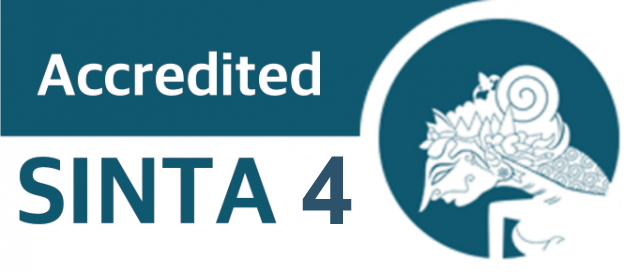Antioxidant Activity of Gel Formulations Containing Various Plant Leaf Extracts: A Review
DOI:
10.29303/jpm.v20i1.8288Published:
2025-01-30Issue:
Vol. 20 No. 1 (2025)Keywords:
Antioxidant; Gel; Plant Leaf ExtractArticles
Downloads
How to Cite
Downloads
Metrics
Abstract
Antioxidants protect the skin from the adverse effects of free radicals, which can potentially trigger premature aging and even skin cancer. Free radicals, with unpaired electrons, are highly reactive and can damage cellular structures. However, the high risk of side effects from synthetic antioxidants, such as skin cancer, has increased interest in natural sources. In cosmetic formulations, gel preparations are highly favored because they can optimally and stably deliver active ingredients to the skin. This study employed a literature review method by examining and collecting articles from relevant scientific journals published over the past 10 years (2014–2024), with 13 articles as primary references. The analysis found that several extracts, such as leilem leaf, pandan, and green tea, exhibited strong antioxidant potential, as indicated by low IC50 values, making them ideal as active ingredients in gel formulations. In addition to the type of plant leaves, the effectiveness of these antioxidants is influenced by the extract concentration used, solvent selection during extraction, and the processing techniques employed in formulation.
References
Y. Kesuma, Antioksidan Alami dan Sintetik. Padang: Andalas University Press. 2015.
E. Fitraneti, Y. Rizal, S. Riska, I. Primawati, & D. Hamama, “Pengaruh Paparan Sinar Ultraviolet terhadap Kesehatan Kulit dan Upaya Pencegahannya : Tinjauan Literatur,” Scientific Journal, vol. 3, no. 3, pp. 185–194, 2024, doi: https://doi.org/10.56260/sciena.v3i3.147
M. Ibroham, S. Jamilatun, &D. K. Ika, “A Review: Potensi Tumbuhan-Tumbuhan Di Indonesia Sebagai Antioksidan Alami,” in Seminar Nasional Penelitian LPPM UMJ, 2022, pp. 1–13.
Rustaman, R. Satria, Janitra et al, “Studi Potensi Senyawa Antioksidan dari Kulit Jeruk Nipis (Citrus Aurantifolia) secara in Silico,” Chimica et Natura Acta, vol. 11, no. 3, pp. 136–142, 2023.
M. Stoia & S. Oancea, "Low-Molecular-Weight Synthetic Antioxidants: Classification, Pharmacological Profile, Effectiveness and Trends," Antioxidants, vol. 11, no. 4, 2022, doi: https://doi.org/10.3390/antiox11040638
N. Nusaibah, C. I. Cempaka, S. Abrian, O. Susanti, & T. R. Andayani, “Karakteristik Face Scrub dari Sediaan Simplisia Rumput Laut Sargassum sp,” Majalah Farmasetika, vol. 9, no. 1, p. 76, 2023, doi: https://doi.org/10.24198/mfarmasetika.v9i1.49265
S. Saefudin, S. Marusin, & C. Chairul, “Aktivitas Antioksidan Pada Enam Jenis Tumbuhan Sterculiaceae,” Junal Penelitian Hasil Hutan, vol. 31, no. 2, pp. 103–109, 2013, doi: https://doi.org/10.20886/jphh.2013.31.2.103-109
A. Asrifaturofingah, E. Listiowati, F. U. Matsna, S. Z. Putriliana, &N. A. H. Ulya, “Analisis Aktivitas Senyawa Antioksidan Pada Berbagai Daun Tanaman Herbal dengan Metode DPPH,” Jurnal Pharmascience, vol. 11, no. 1, p. 98, 2024, doi: https://doi.org/10.20527/jps.v11i1.16477
I. Maya & Mutakin, “Review Artikel: Formulasi dan Evaluasi Secara Fisikokimia Sedian Krim Anti-Aging,” Farmaka, vol. 17, no. 2, pp. 296–305, 2018.
BPOM RI, “Peraturan Badan Pengawas Obat Dan Makanan Nomor 17 Tahun 2022 Tentang Perubahan Atas Peraturan Badan Pengawas Obat Dan Makanan Nomor 23 Tahun 2019 Tentang Persyaratan Teknis Bahan Kosmetika,” Bpom Ri, pp. 1–338, 2022.
A. Rizkyah & S. N. Karimah, “Literature Review : Penuaan Dini pada Kulit : Gejala , Faktor Penyebab dan Pencegahan,” Jurnal Gizi dan Kesehatan., vol. 3, no. 2, pp. 107–116, 2023, doi: https://doi.org/10.36086/jgk.v3i2.2029
H. C. Ansel, Pengantar sediaan farmasi. Jakarta: Penerbit Universitas Indonesia, 1989.
Y. Anggraeni, E. Hendradi, and T. Purwanti, “Karakteristik Sediaan Dan Pelepasan Natrium Diklofenak Dalam Sistem Niosom Dengan Basis Gel Carbomer 940,” PharmaScientia, vol. 1, no. 1, pp. 1–15, 2012.
W. Yulianti, G. Ayuningtyas, R. Martini, and I. Resmeiliana, “Pengaruh Metode Ekstraksi Dan Polaritas Pelarut Terhadap Kadar Fenolik Total Daun Kersen (Muntingia calabura L),” Jurnala Sains Terapan., vol. 10, no. 2, pp. 41–49, 2020, doi: https://doi.org/10.29244/jstsv.10.2.41-49
Liandhajani & H. N. Septiani, “Pengaruh Konsentrasi Ekstrak Dalam Sediaan Gel Terhadap Karakteristik, Stabilitas Fisik, Antioksidan Hedonik,” Jurnal Ilmiah Farmasi, vol. 11, no. 1, pp. 75–84, 2022, doi: https://doi.org/10.30591/pjif.v11i1.2959
U. Hasanah, Y. Yusriadi, and A. Khumaidi, “Formulasi Gel Ekstrak Etanol Daun Kelor (Moringa oleifera Lam) Sebagai Antioksidan,” Journal of Natural Science, vol. 6, no. 1, pp. 46–57, 2017, doi: https://doi.org/10.22487/25411969.2017.v6.i1.8079
M. Zaky, N. Rusdiana & A. Darmawati, “Formulasi Dan Evaluasi Fisik Sediaan Gell Antioksidan Ekstrak Etanol 70% Daun Belimbing Wuluh (Averrhoa Bilimbi L.) Menggunakan Metode Dpph” Jurnal Farmagazine vol. 7, no. 1, p. 278, 2021, doi: https://doi.org/10.47653/farm.v8i2.556
E. R. Seru, H. J. Edy, & J. P. Siampa, “Formulation Of Hpmc As Gelling Agent Gel Of Ethanol Extract Of Leilem Leaves (Clerodendrum minahassae teisjm dan binn) And Antioxidant Effectiveness Test Formulasi Hpmc Sebagai Gelling Agent Gel Ekstrak Etanol Daun Leilem (Clerodendrum minahassae teis,” Jurnal Pharmacon, vol. 10, pp. 1033–1039, 2021.
K. Runtuwene, P. V. Y. Yamlean, & A. Yudistira, “Formulasi,Uji Stabilitas Dan Uji Efektivitas Antioksidan Sediaan Gel Dari Ekstrak Etanol Daun Sesewanua (Clerodendron squamatum Vahl) Dengan Menggunakan Metode Dpph,” Pharmacon, vol. 8, no. 2, p. 298, 2019, doi: https://doi.org/10.35799/pha.8.2019.29295
S. A. Shofiah, “Forulasi, Karakteristik, Dan Uji Aktivitas Antioksidan Sediaan Gel Moisturizer Anti-Aging Ekstrak Daun Sukun (Artocarpus altilis),” Indonesian Journal of Health Science, vol. 4, no. 1, pp. 84–90, 2024, doi: https://doi.org/10.54957/ijhs.v4i1.579
R. Sari, T.Elmitra. Nofiandi & D. Rezki, “Jurnal Katalisator,” Formulasi Dan Uji Aktivitas Antioksidan Sediaan Gel Ekstrak Daun Pacing (Cheilocostus speciosus)" Jurnal Katalisator vol. 3, no. 2, pp. 135–144, 2018, doi: https://doi.org/10.22216/jk.v3i1.2297
M. Elyadi, W. Subaidah, & Muliasari “Formulasi dan Uji Aktivitas Antiradikal Bebas Emulgel Ekstrak Daun Juwet (Syzygium cumini L.) dengan Metode DPPH (Diphenilpycrylhydrazil),” Jurnal Sains dan Kesehatan., vol. 3, no. 1, pp. 242–247, 2021, doi: https://doi.org/10.25026/jsk.v3i3.565
D. P. Sukamdi, A. Zahrah, S. Harimurti, V. L. Damarwati, R. Erviana, & A. Amid, “Optimization of Antioxidant Gel Formula Green Tea Leaf Extract (Camellia sinensis L.) With Virgin Coconut Oil (VCO),” in Proceedings of Selected Papers of International Conference on Health, Science, and Environment. pp. 122–130. 2024, doi: https://doi.org/10.2991/978-94-6463-431-0_14
W. A. Subaidah, Y. Andayani, & D. A. P. Kumaradewi, "Emulgel formulation of wild cherry leaves (Antidesma bunius L. Spreng) extract and its antioxidant activity," Acta Pharm. Indones. A Acta Pharmaciae Indonesia, vol. 10, no. 2, p. 4036, 2022. doi: https://doi.org/10.20884/1.api.2022.10.2.4036
D. P. Wijaya, H. Herlina, & R. Astryani, “Formulasi Dan Uji Antioksidan Gel Ekstrak Daun Kopi Robusta (Coffea canephora),” Jurnal Ilmiah Farmako Bahari, vol. 12, no. 2, p. 141, 2021, doi: https://doi.org/10.52434/jfb.v12i2.1106
A. V Badarinath et al., "A Review On In-Vitro Antioxidant Methods: Comparisions, Correlations and Considerations," International Journal of PharmTech Research, vol. 2, no. 2, pp. 1276–1285, 2010.
M. Ulfah, F. Sethyana & S.A.F, Anam “Potensi Antioksidan dan Kadar Total Fenolik Flavonoid Ekstrak Daun Pandan Wangi (Pandanus Amarillyfolius Roxb.) pada Variasi Pelarut,” Media Farmasi Indonesia., vol. 18, no. 2, pp. 115–123, 2023, doi: https://doi.org/10.53359/mfi.v18i2.227
Rahmasiahi, S. Hadiq, & T. Yulianti, "Skrining Fitokimia Ekstrak Metanol Daun Pandan (Pandanus amarillyfolius Roxb)," Journal of Pharmaceutical Science and Herbal Technology, vol. 1, no. 1, pp. 32–39, 2023.
L. Zhang, Y. Shan, K. Tang, & R. Putheti, "Ultrasound-assisted extraction flavonoids from Lotus (Nelumbo nuficera Gaertn) leaf and evaluation of its anti-fatigue activity," International Journal of Physical Sciences, vol. 4, no. 8, pp. 418–422, 2009.
P. Leksono, O. Komala, & Ismanto, “Aktivitas ekstrak daun pandan wangi (Pandanus amaryllifolius) dengan Metode DPPH” Journal Of Pharmaceutical, vol. 1, no. 2, pp. 74–85, 2013, doi: https://doi.org/10.30989/jop.v1i2.1223
M. Wiritania, I. S. Muyassaroh, & B. D. Septiarifianti, “Daun Bayam Hijau Dengan Metode Ekstraksi Maserasi Dan Uji Kuantitatif Menggunakan Spektrofotometer Uv – Vis,” Jurnal Studi Multidisipliner, vol. 8, no. 12, pp. 761–769, 2024.
N. Fauziyah, A. Widyasanti, & Y. Sutresna, “Kajian Pengaruh Konsentrasi Etanol Terhadap Karakteristik Oleoresin Ampas Jahe Merah (Zingiber officinale Roscoe) Limbah Penyulingan,” Teknotan, vol. 16, no. 3, p. 169, 2022, doi: https://doi.org/10.24198/jt.vol16n3.6
F. I. Gunawan, S. A. Putri, V. U. Ramdhanawati, & M. Umami, “Kajian Metode Maserasi Ekstrak Daun Teh Hijau (Camellia sinensis) Dengan Berbagai Pelarut,” Jurnal Biology Science & Education, vol. 13, no. 1, pp. 66–75, 2024.
L. A. Hidayah & M. A. Anggarani, "Indonesian Journal of Chemical Science Determination of Total Phenolic , Total Flavonoid , and Antioxidant Activity of India Onion Extract," Indonesian Journal of Chemical Science, vol. 11, no. 2, pp. 124–135, 2022, doi: https://doi.org/10.15294/ijcs.v11i2.54610
I. L. Ramos & T. M. B. Bandiola, "Phytochemical Screening of Syzygium Cumini Myrtaceae Leaf Extracts Using Different Solvents of Extraction," Der Pharmacia Lettre , vol. 9, no. 2, pp. 74–78, 2017.
Nurhasanah & Novian, “Analisis Ekstrak Etanol Buah Labu Kuning ( Cucurbita Moschata D ),” Jurnal Parapemikir, vol. 9, no. 1, pp. 54–59, 2020, doi: https://doi.org/10.30591/pjif.v9i1.1758
M. Syahruddin, M. Aswad, Y. D. P. A. Embu, & K. Khadijah, “Uji Aktivitas Antioksidan Ekstrak Etanol Daun Murbei (Morus alba L) Asal Kupang, Nusa Tenggara Timur Dengan Metode Dpph (2,2 Diphenil-1- Picrylhydrazyl),” Techno: Jurnal Penelitian., vol. 8, no. 1, p. 246, 2019, doi: https://doi.org/10.33387/tk.v8i1.947
A. R. Pradana, H. Wahyudi, & D. Lestari, “Rendemen Ekstrak Etanol Herba Rumput Akar WangI (Polygala paniculata L) Pada Perbandingan Konsentrasi Pelarut,” Jurnal Riset Kefarmasian Indonesia., vol. 5, no. 3, pp. 373–383, 2023, doi: https://doi.org/10.33759/jrki.v5i3.418
C. Montella, Noval, & D. Kurniawati, “Formulation and Evaluation of Karamunting Fruit Extract Nano Spray Gel ( Rhodomyrtus tomentosa ( Aiton ) Hassk .) with Carbopol 940 Concentration Variations,” Jurnal Surya Mediaka, vol. 10, no. 2, pp. 117–128, 2021, doi: https://doi.org/10.33084/jsm.v10i2.7733
S. A. Novitri, N. N. Nurmeilis, & D. R. Kamal, “Efek antihipertensi Ekstrak Etanol Daun Belimbing Wuluh (Averrhoa blimbing L.) dengan Metode Non-invasiv,” Pharmaceutical and Biomedical Sciences Journal, vol. 2, no. 1, pp. 11–18, 2020, doi: https://doi.org/10.15408/pbsj.v2i1.15235
D. Luthfianto & D. Marfuah, “Aktivitas Antioksidan Teh Daun Belimbing Wuluh ( Averrhoa Bilimbi L ),” INFOSAINTEK: Jurnal Informatika, Sains, dan Teknologi, vol. 1, no. 1, pp. 1–8, 2022, doi: https://doi.org/10.57151/jsika.v1i1.17
R. C. Rowe. Handbook of Pharmaceutical Excipient, 6th Ed. London: The Pharmaceutical Press. 2009
N. A. Setiani, F. Nurwinda, & D. Astriany, “Pengaruh Desinfektan dan Lama Perendaman pada Sterilisasi Eksplan Daun Sukun ,” Biotropika Journal of Tropical Biology, vol. 6, no. 3, pp. 78–82, 2018, doi: https://doi.org/10.21776/ub.biotropika.2018.006.03.01
Y. M. Huselan, M. R. J. Runtuwene, & D. S. Wewengkang, “Aktivitas antioksidan ekstrak etanol, etil asetat, dan n-heksan dari daun sesewanua (Clerodendron squamatum Vahl.),” Pharmacon, vol. 4, no. 3, pp. 155–163, 2015.
R. K. Wahyuningtyas, "Aktivitas Antioksidan Ekstrak Daun, Bunga, Dan Batang Pacing (Costus speciosus) Dengan Metode 1,1-diphenyl-2- picrylhydrazin (DPPH)," 2020. [Online]. Available: http://repository.radenintan.ac.id/id/eprint/13581
D. A. P. Kumaradewi, W. A. Subaidah, Y. Andayani, & A. Al-Mokaram, “Phytochemical Screening and Activity Test of Antioxidant Ethanol Extract of Buni Leaves (Antidesma bunius L. Spreng) Using DPPH Method,” Jurnal Penelitian Pendidikan IPA., vol. 7, no. 2, pp. 275–280, 2021, doi: https://doi.org/10.29303/jppipa.v7i2.675
S. Jannah, W. Hajrin, & N. I. Hanifa, “Optimasi Formula Sampo Ekstrak Etanol Daun Delima (Punica granatum L.) Dengan Metode Simplex Lattice Design," Sasambo Journal of Pharmacy., vol. 5, no. 2, 2023, doi: https://doi.org/10.29303/sjp.v5i2.347
M. Murniyati, W. A. Subaidah, & A. D. Ananto, “Formulasi Dan Uji Aktivitas Antiradikal Bebas Sediaan Gel Ekstrak Etanol Daun Bidara (Ziziphus mauritiana Lamk) Menggunakan Metode DPPH,” Lumbung Farm. Jurnal Ilmu Kefarmasian, vol. 2, no. 2, p. 96, 2021, doi: https://doi.org/10.31764/lf.v2i2.5491
Author Biographies
Diva Valentin, Department of Pharmacy, Faculty of Health Sciences, Singaperbangsa Karawang University
Devi Ratnasari, Department of Pharmacy, Faculty of Health Sciences, Singaperbangsa Karawang University
Ailla Az-zahraa, Department of Pharmacy, Faculty of Health Sciences, Singaperbangsa Karawang University
Theresia Natalie Cahyani, Department of Pharmacy, Faculty of Health Sciences, Singaperbangsa Karawang University
Tasya Permata Shella, Department of Pharmacy, Faculty of Health Sciences, Singaperbangsa Karawang University
Muhammad Adit Adzkia, Department of Pharmacy, Faculty of Health Sciences, Singaperbangsa Karawang University
License
Copyright (c) 2025 Diva Valentin, Devi Ratnasari, Ailla Az-zahraa, Theresia Natalie Cahyani, Tasya Permata Shella, Muhammad Adit Adzkia

This work is licensed under a Creative Commons Attribution 4.0 International License.
The following terms apply to authors who publish in this journal:
1. Authors retain copyright and grant the journal first publication rights, with the work simultaneously licensed under a Creative Commons Attribution License 4.0 International License (CC-BY License) that allows others to share the work with an acknowledgment of the work's authorship and first publication in this journal.
2. Authors may enter into separate, additional contractual arrangements for the non-exclusive distribution of the journal's published version of the work (e.g., posting it to an institutional repository or publishing it in a book), acknowledging its initial publication in this journal.
3. Before and during the submission process, authors are permitted and encouraged to post their work online (e.g., in institutional repositories or on their website), as this can lead to productive exchanges as well as earlier and greater citation of published work (See The Effect of Open Access).











